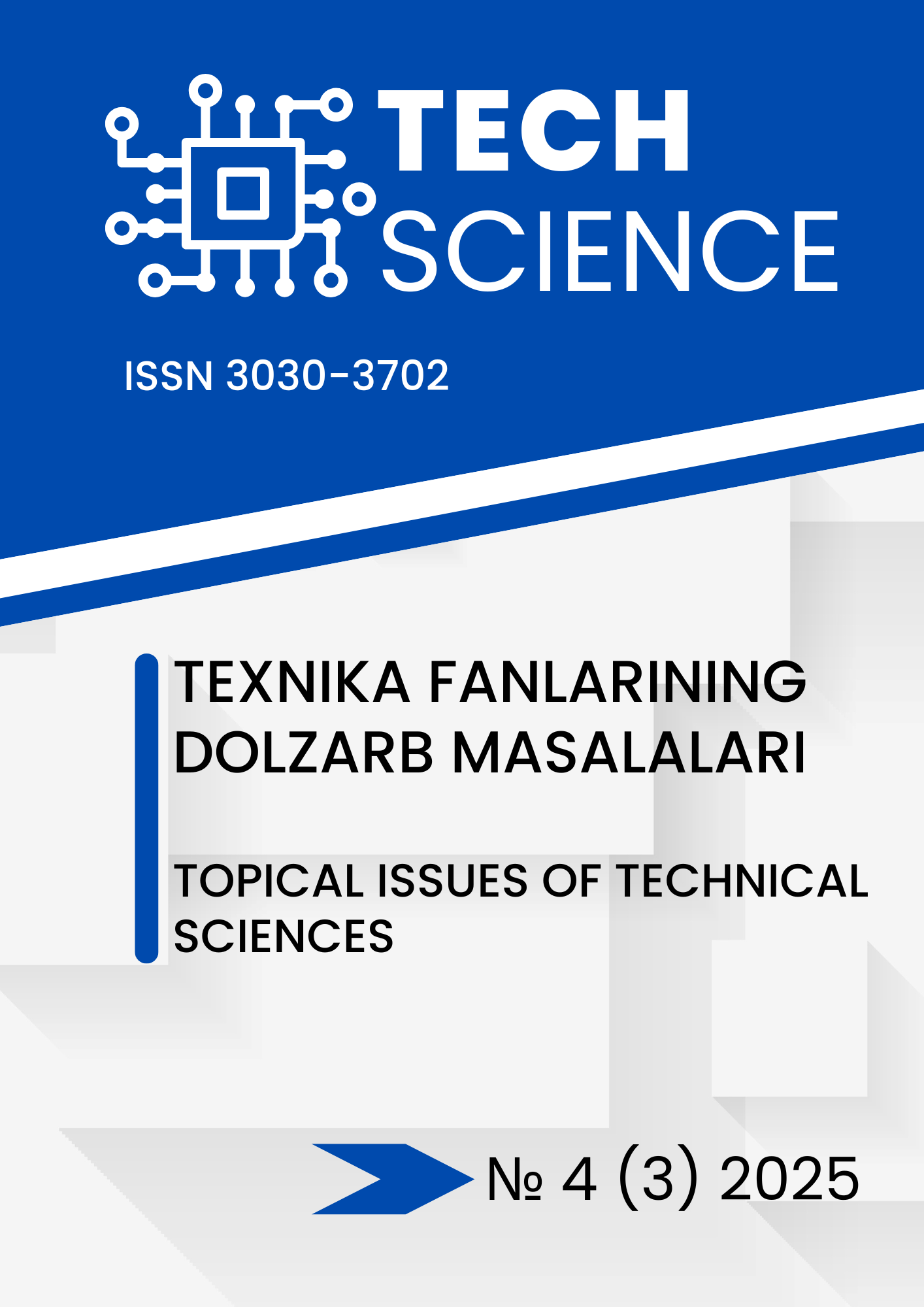VODOROD ISHLAB CHIQARISHNING ZAMONAVIY TEXNOLOGIYALARI
Kalit so'zlar
https://doi.org/10.47390/issn3030-3702v3i4y2025N07Kalit so'zlar
vodorod energiyasi, quyosh elektrolizi, ishqoriy elektroliz, portativ tizim, qayta tiklanuvchi energiya, PEM, AEM, gaz ajralishi, CO₂ emissiyasi, yashil vodorod.Annotasiya
Ushbu maqolada qayta tiklanuvchi energiya manbalari asosida ekologik toza vodorod ishlab chiqarish texnologiyalari tahlil qilingan. Ayniqsa, quyosh panelli portativ ishqoriy elektroliz tizimlarining afzalliklari va ularni kichik quvvatli, avtonom sharoitlarda qoʻllash imkoniyatlari oʻrganilgan. Anʼanaviy ishqoriy va PEM elektroliz texnologiyalarining solishtirmasi keltirilib, mavjud yondashuvlarning afzallik va cheklovlari aniqlangan. Maqola davomida texnologik samaradorlik, ekologik tozaligi va iqtisodiy jihatlar chuqur tahlil qilinadi. Ushbu yondashuv masofaviy hududlar uchun istiqbolli yechim sifatida taklif etiladi.
Manbalar
1. IEA. (2021). Global Hydrogen Review 2021. International Energy Agency. https://www.iea.org/reports/global-hydrogen-review-2021
2. Staffell, I., Scamman, D., Abad, A. V., Balcombe, P., Dodds, P. E., Ekins, P., ... & Ward, K. R. (2019). The role of hydrogen and fuel cells in the global energy system. Energy & Environmental Science, 12(2), 463–491.
3. Bicer, Y., & Dincer, I. (2017). Clean hydrogen production from waste biomass using a novel solar reactor. International Journal of Hydrogen Energy, 42(2), 1475–1485.
4. Dincer, I., & Acar, C. (2015). Review and evaluation of hydrogen production methods for better sustainability. International Journal of Hydrogen Energy, 40(34), 11094–11111.
5. Armaroli, N., & Balzani, V. (2016). The hydrogen issue. ChemSusChem, 9(4), 403–407.
6. European Commission. (2020). A hydrogen strategy for a climate-neutral Europe. https://energy.ec.europa.eu/topics/energy-strategy/hydrogen_en
7. Zeng, K., & Zhang, D. (2010). Recent progress in alkaline water electrolysis for hydrogen production and applications. Progress in Energy and Combustion Science, 36(3), 307–326.
8. Ursua, A., Gandia, L. M., & Sanchis, P. (2012). Hydrogen production from water electrolysis: current status and future trends. Proceedings of the IEEE, 100(2), 410–426.
9. Barbir, F. (2005). PEM electrolysis for production of hydrogen from renewable energy sources. Solar Energy, 78(5), 661–669.
10. Carmo, M., Fritz, D. L., Mergel, J., & Stolten, D. (2013). A comprehensive review on PEM water electrolysis. International Journal of Hydrogen Energy, 38(12), 4901–4934.
11. Millet, P., Grigoriev, S., Porembsky, V., & Fateev, V. (2011). Hydrogen production by water electrolysis: current trends and future prospects. International Journal of Hydrogen Energy, 36(6), 4134–4144.
12. Genc, B. (2019). Hydrogen production technologies: Current state and future developments. International Journal of Energy Research, 43(12), 6591–6613.
13. Mazloomi, K., & Gomes, C. (2012). Hydrogen as an energy carrier: Prospects and challenges. Renewable and Sustainable Energy Reviews, 16(5), 3024–3033.
14. Carmo, M., Stamenkovic, V., & Stolten, D. (2014). Review of PEM water electrolysis: Cell design and materials. Electrochimica Acta, 130, 581–589.
15. Arico, A. S., Siracusano, S., & Baglio, V. (2015). PEM electrolysis: Materials and cell performance. Journal of Power Sources, 297, 249–260.
16. Vincent, I., & Bessarabov, D. (2018). Low cost hydrogen production by anion exchange membrane electrolysis: A review. Renewable and Sustainable Energy Reviews, 81, 1690–1704.
17. Fujishima, A., & Honda, K. (1972). Electrochemical photolysis of water at a semiconductor electrode. Nature, 238(5358), 37–38.
18. Goto, K., Umeda, M., & Nagasaka, T. (2017). Development of PV-electrolyzer hybrid system for hydrogen production. International Journal of Hydrogen Energy, 42(30), 19371–19378.
19. Turner, J. A. (2004). Sustainable hydrogen production. Science, 305(5686), 972–974.
20. Andrews, J., & Shabani, B. (2012). Reconsidering the economics of photovoltaic hydrogen production. Renewable Energy, 35(9), 1931–1937.
21. Ahadi, M. M., & Lee, K. Y. (2017). MPPT techniques for PV systems: A review. Journal of Electrical Engineering & Technology, 12(6), 2220–2230.
22. Carmo, M., et al. (2020). Electrochemical challenges in designing PEM electrolyzers. Electrochimica Acta, 354, 136622.
23. Lin, R., & Zhu, H. (2016). Effects of electrolyte concentration on electrolysis efficiency. Electrochemistry Communications, 69, 65–69.
24. Wang, Y., Chen, K., & Zhang, S. (2021). Lightweight PEM electrolyzer for drone fuel application. Journal of Power Sources, 483, 229055.








